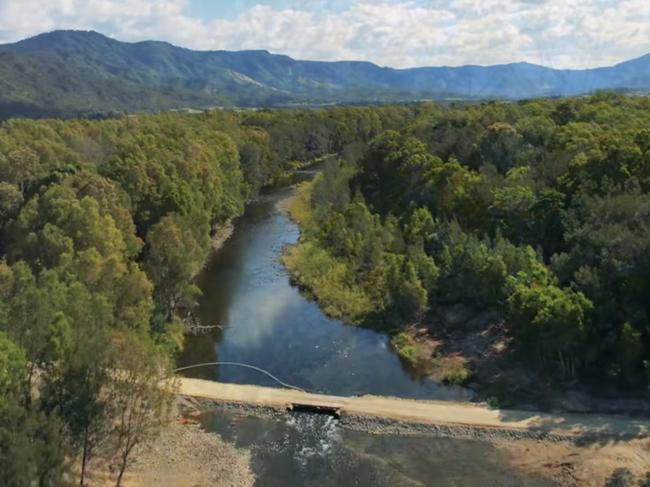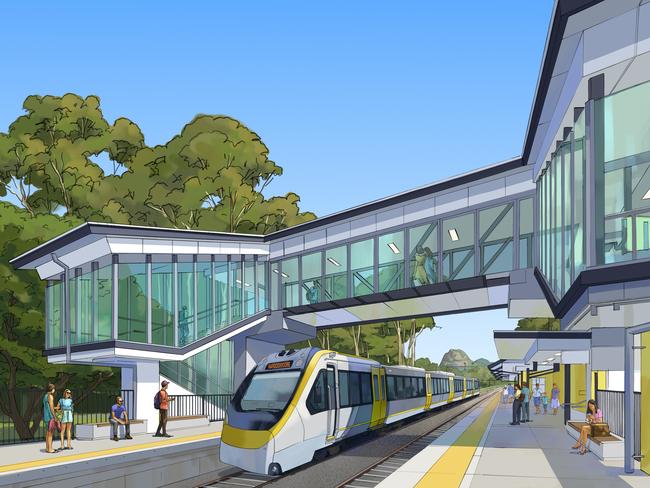Federal budget 2024: Qld gets road and rail funds, question mark over water
Major road projects suffering cost blowouts have received funding injections, a critical rail line in the heart of the Sunshine Coast has been funded and cash for the Second Bruce has been secured.
QLD Politics
Don't miss out on the headlines from QLD Politics. Followed categories will be added to My News.
Major road projects suffering cost blowouts have received funding injections, a critical rail line in the heart of the Sunshine Coast has been funded and cash for a “second Bruce Highway” has been secured.
But that is the extent of the big-ticket infrastructure goodies for Queensland, with the federal budget also throwing uncertainty over nearly $600m in water projects.
Queensland’s fledgling hydrogen industry, particularly in Gladstone and Townsville, is also in line for benefits under Treasurer Jim Chalmers’ latest federal budget, unveiled on Tuesday night.
It includes a new hydrogen production tax incentive for renewable hydrogen produced in the 12 years starting from 2027, in a bid to incentivise greater investment in the sector.
The federal budget does not mention the state Labor government’s controversial Pioneer-Burdekin Pumped Hydro Project — the critical centrepiece in Queensland’s renewable energy transition.
The smaller Borumba Pumped Hydro Project has secured funding, though the figure remains commercial-in-confidence.

In a major lifeline for Premier Steven Miles, the federal government has pumped another $431.7 million into the Coomera Connector Stage 1 — covering a more than $800m cost blowout revealed earlier this year.
There is also another $226.7m for the Beerburrum to Nambour Rail Upgrade, which had blown out to $1bn in December 2023 after initially costing $550m.
The federal government swung the axe on $200m worth of projects and put a looming question mark over $3bn worth of Queensland’s road and rail plans in the aftermath of its 90-day infrastructure review last year.
The latest budget has given the state a bit more security for future plans, with the federal government affirming $720m in construction funds for the “Second Bruce” — officially the Inland Freight Route — will be released following the completion of additional planning.
The Bruce Highway, as previously revealed by the Courier-Mail, in line for a $467 million upgrade package spread over four years.
Sunshine Coast Direct Rail has received $1.15bn more in federal government funding, bringing their share to $2.75bn. This paves the way for the $5.5bn project to build 19km of tracks from Beerwah to Caloundra to begin in 2026 as planned.

Queensland’s share of federal funds is in line with its population, according to analysis of budget figures. Queensland will receive about $161.8bn in that time — or 20.8 per cent of federal funds. Queensland is 20.5 per cent of the Australian population.
Mr Miles and his frontbench are set to travel to Bundaberg on Wednesday in a trip designed to save the government’s most marginal electorate, held by Labor’s Tom Smith with a wafer thin 0.01 per cent.
And it can expect a few headaches on the bungled Paradise Dam project, with the federal budget revealing cash for its improvement had been deferred beyond 2027-28.
Cash for the Big Rocks Weir project and the Hughenden Irrigation Scheme — both in North Queensland — had also been deferred pending an investment decision that would be made upon completion of the business cases and planning works.
This marks the third straight federal budget since Labor came to power that water projects in Queensland have taken a hit.
Labor’s October 2022 mini-budget brought the end of the $5.4bn Hells Gate Dam project and $483m Urannah Dam proposal.
The 2023 federal budget brought the abolishment of the North Queensland Water Infrastructure Authority, in a measure that saved $9.5m.
Queenslanders will be the biggest benefactors of the federal budget’s energy bill relief measure, with Mr Chalmers confirming Australian households — regardless of income — would get $300 off electricity in 2024-25.
This builds on the state government’s $1000 pre-election bill relief — meaning the average Queensland household won’t pay for electricity until early 2025.
Mr Chalmers framed his budget as one focused on the economic challenges of today while viewing the future with optimism.
“We must strive for more than muddling through or making do,” he said.
A price tag of $22.7bn was put on the federal government’s bold manufacturing revival plan for the first time, with the budget also detailing $13.7 billion in production tax incentives for green hydrogen and processed critical minerals.
There is also a $1.7 billion Future Made in Australia Innovation Fund, to develop new industries such as green metals and low carbon fuels.
Queensland was the backdrop for Prime Minister Anthony Albanese’s Future Made in Australia policy announcement in April.
The state was also quick to benefit, with the federal government announcing $400m in new loans to Australian company Alpha HPA to build a high-purity alumina process facility in Gladstone.
PsiQuantum, a US-based tech start-up angling to build a quantum supercomputer in Brisbane, has also been supported with nearly $1bn in federal and state government grants and loans.





